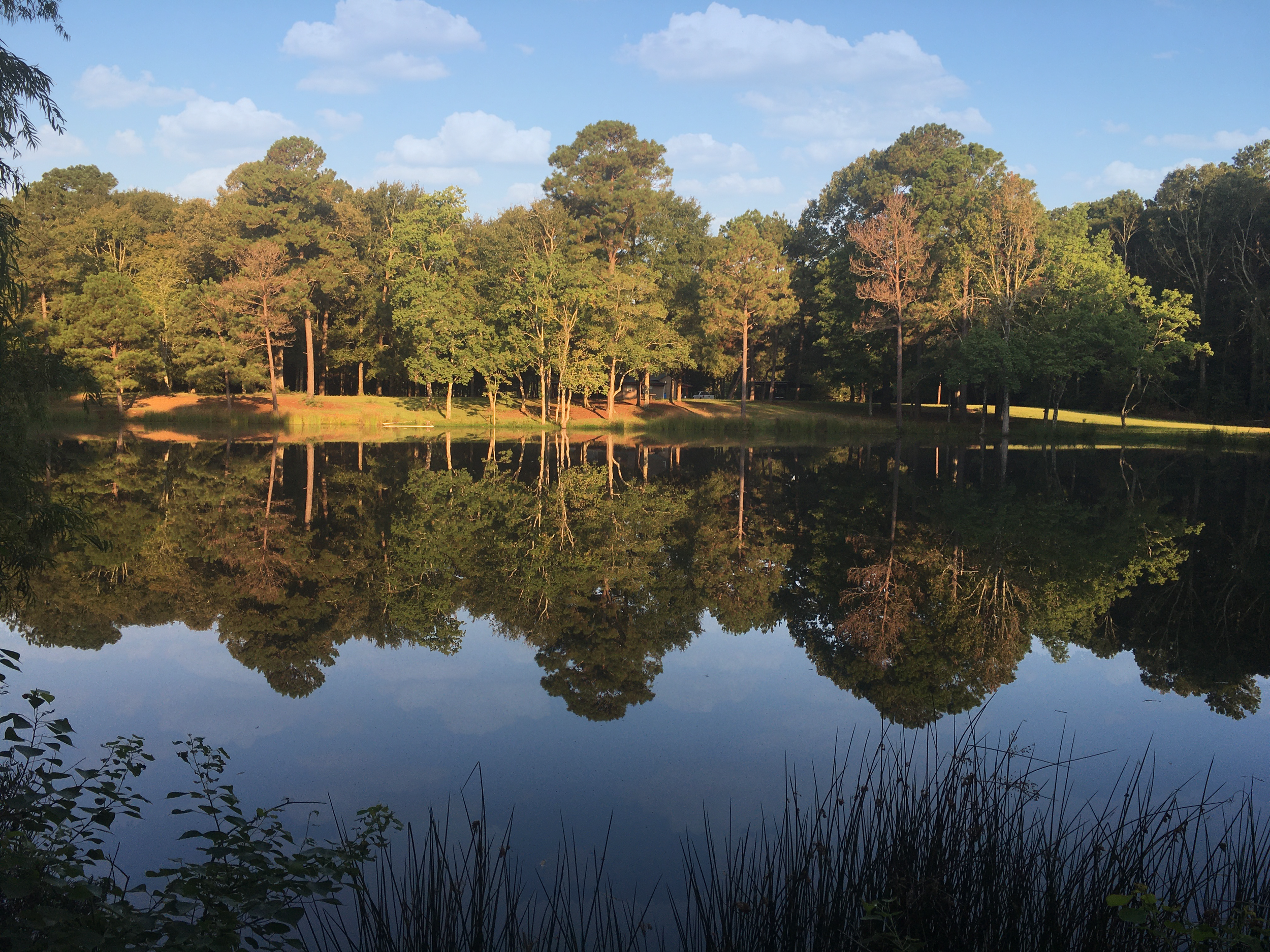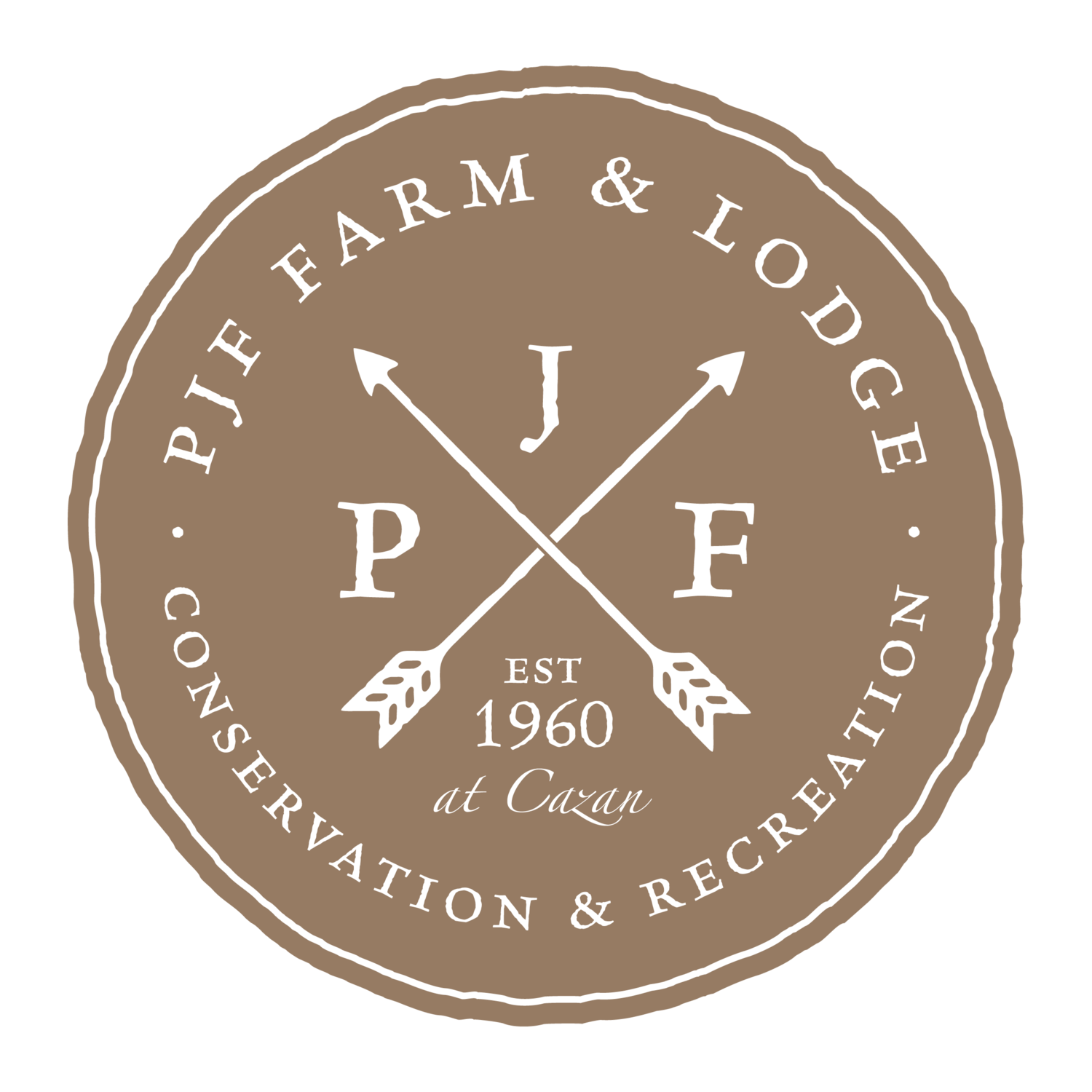
welcome to pjf farm
Louisiana is home to six ecoregions. An ecoregion is a defined area where the type, quality, and quantity of environmental resources are generally similar. Three of Louisiana’s ecoregions meet within PJF Farm and Lodge’s (the Farm’s) 3,439 total acres. The three eco-regions include:
· Mixed Pine-Hardwood Forest from the West & North
· Red River Bottomlands from the East
· Coastal Tallgrass Prairie from the South
Each ecoregion contains many different types of habitats. A habitat is a place where plants and animals get their food/nutrients, water, and shelter – a place to live. Louisiana has over 70 different habitat types, sometimes known as plant communities. The Farm is divided into the following six separate habitat types.
Our Habitats
-
At this time, approximately 1,550 acres of the Farm are currently worked in rice and crawfish on a year-round rotating basis. This supplies additional wetland environments for many native plants and animals. The ways that rice/crawfish aquaculture and wildlife conservation complement each other have been studied and recorded throughout the rice country in southwestern Louisiana.
Nearly all waterbird species (Herons, Egrets, Ibis, Ducks and other Waterfowl, Sandpipers, Plovers, and other Shorebirds, Coots, Rails, Gallinules, etc.) benefit greatly from the food and cover provided by rice and crawfish farming.
These agricultural lands also include long borders of thick, shrub-like plants, associated with wild bushes/woody plants, and irrigation canals. Shrub-loving songbirds, such as Vireos, Wrens, Sparrows, Warblers, Buntings, and Grosbeaks, live in these areas year-round. Songbird populations increase by four times along these shrubby, low, woody plant areas during the winter months!
-
This habitat type is found down in the Red River bottomlands along the banks of Bayous Chicot and Cocodrie. It is also found along the diversion channel that Bayou Cocodrie shares with Bayou Boeuf. Only 61 acres of Bottomland Hardwood habitat currently exists at the Farm.
Hackberry is the main tree found in the lower-lying parts of this forest type. Water Oak, Live Oak, and Honey Locusts are also common in this area. Up to now, five species of Oak have been identified at the Farm within this habitat type.
Higher and better-drained parts of the forests located next to water or waterways also include “second bottom” or “bench” type hardwood species, such as Swamp Chestnut Oak, Cherrybark Oak, and Pecan.
-
This habitat appears just downslope of the Mixed Pine-Hardwood Forest ridges. This is perhaps the loveliest of all Gulf Coastal Plain Forest types. American Beech and assorted Oaks and Hickories are the most common trees found in this habitat. It is most beautiful in early spring when short-lived plant species, such as Louisiana Trillium, Mayapple, Woodland Phlox, Spring Cress, Indian Pink, and Crane-fly Orchid, decorate the forest floor.
This habitat type at the Farm totals 960 acres and is most often seen along both the Lil’ Bleu and White-tail trail loops.
-
Surviving, yet extinct, coastal prairie plant species are found along the gas pipeline right-of-way at the Farm. This suggests that “fingers” of Coastal Tallgrass Prairie once snaked into the property from the south, mostly between the Mixed Pine-Hardwood Terrace Forest ridges and the edge of the Red River floodplain bluff.
At present, only a few surviving prairie plant species have been found. These are often mixed in with exotic range/pasture grasses.
At the Farm, this habitat type also includes artificially maintained grasslands found along roadsides and along the 20-acre pipeline right-of-way.
-
This habitat typically includes hilly landscapes. At the Farm, this particular habitat type is found on dry ridgetops. The ridgetops were created by the Red River sediments on top of the Prairie Terrace. The Prairie Terrace is the last of Louisiana’s Ice Age-built landforms. Loblolly Pine mixed with a wide variety of hardwood trees, particularly Oaks and Hickories, and shrubs are the most common growth found at the Farm’s ridgetops.
About 372 total acres of this plant community are scattered on the west side of the Farm.
-
These two habitat types are combined for discussion of the various plants and animals that make their homes here. Swamps are permanently flooded forests. They feature mostly Bald Cypress trees along with Tupelo Gum and Swamp Red Maple.
Open-water “lake” (non-forested) areas are dotted within the centers of the Cypress-Tupelo Swamps as well. The Swamps host different suites of plants and animals. Approximately 375 acres of Cypress-Tupelo Swamp exist at the Farm. This includes portions that host a spectacular mixed waterbird nesting rookery (a collection of nests high in a clump of trees) each spring.
A relatively deep 76-acre open-water lake is located at the northern tip of the property. It was formed by the mining of sand used as the road foundation of nearby Interstate 49. Each winter, this lake hosts large numbers of resting/roosting duck species. Also, numerous songbirds settle around the lake’s wooded boundary.






